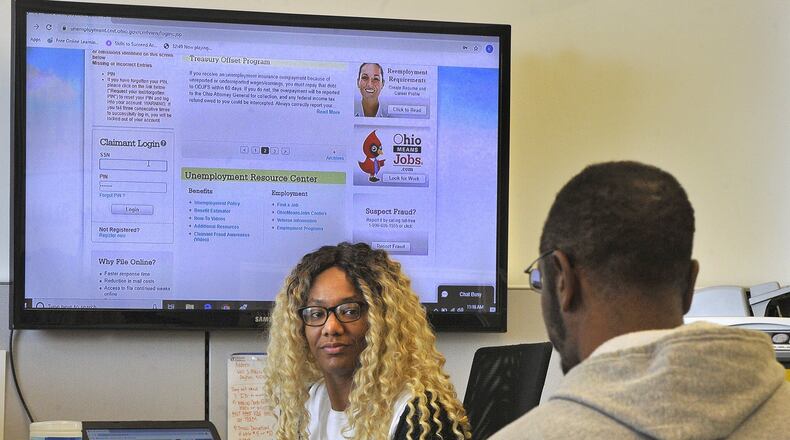PUA is a new federal program meant to cover more people than traditional unemployment benefits, the Ohio Department of Job and Family Services (ODJFS) has said.
The exact numbers, from Kim Hall, ODJFS director — $1,057,939,828 paid to 160,485 claimants.
RELATED: Answering key questions about the economic crisis: Have we hit bottom yet? ‘Far from it’
The program offers up to 39 weeks of benefits to many who traditionally have not qualified for unemployment benefits, including self-employed workers, 1099 tax filers and part-time workers — at a time when those benefits are desperately needed.
“I think by the time we review and pay out everyone, we likely will be upwards of 200,000, for sure, payouts for PUA,” Hall said. “But that number grows every day.”
The benefit amount is similar to traditional unemployment payments, plus an additional $600 per week through July 25.
As of Tuesday, the state has paid nearly $3.5 billion in overall unemployment compensation to more than 663,000 Ohioans, Hall said.
Ohio has processed 93% of application for compensation, with 6.6% of applications pending.
Hall noted that not everyone who has applied for benefits is actually eligible.
“At this point, that 6.6% represents honestly the most complex claims,” Hall said. That includes situations such as claimants who have worked out of state or other difficult scenarios, she said.
Coronavirus: Complete coverage
Ohio has also started issuing PEBT payments, or Pandemic Electronic Benefits Transfer payments for children who have not access to free or reduced-price school lunches.
“Those children obviously couldn’t get those meals because they were remote-learning over the past couple of months,” said Kara Wente, ODJFS assistant director. “Last week, we were excited to issue our first round of benefits.”
The state issued one-time payments of $302.10 to more than 321,000 children. In addition, the state paid $239.40 to nearly 30,000 children. The amounts differed based on eligibility dates, Wente said.
More children will receive payments in coming weeks, with some households receiving more than one PEBT card, she said.
Asked if she thought the number of unemployed people — nearly 1 million Ohioans were unemployed in April — had any correlation to the size of ongoing protests against the death of George Floyd, Hall said the issue was more complex.
“I would say that the scale of the protests really reflects kind of the severity of the issue, frankly,” Hall said. “Certainly the ability to protest on a weekday, or what have you, may be enhanced by someone who has a more flexible work schedule or is unemployed.”
“But I would venture to say that events not related to unempl0yment are what have triggered the level of fed-upness, if that’s a word, that individuals have reached,” she added.
ODJFS is a $3.3 billion state agency with about 2,300 employees.
About the Author

